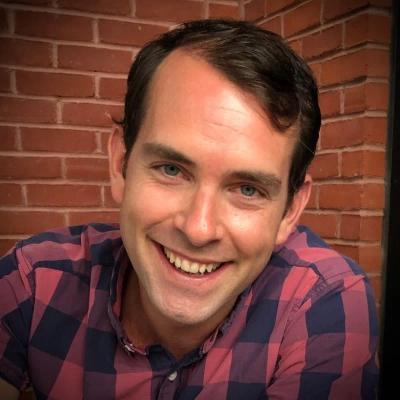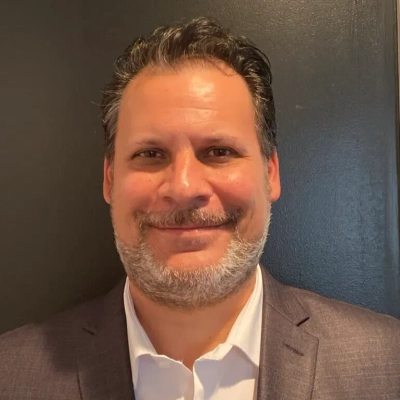How to Make Difficult Decisions With Limited Information as a Leader
Leaders constantly face high-stakes decisions without complete information, and knowing how to move forward confidently can determine success or failure. This article brings together insights from experts who have mastered the art of making tough calls under uncertainty. The strategies shared here offer practical frameworks for acting decisively while managing risk and maintaining team trust.
Prioritize Customer Needs Over Future Vision
Last year we had to choose between investing in new AI development or expanding our service team, with only three days to decide due to a limited partnership opportunity. I gathered input from our existing clients about their biggest pain points, and 80% wanted better ongoing support over new features they might never use. The lesson: when you lack data, talk directly to the customers who pay your bills—their current needs trump your future vision. We doubled down on service, retained 95% of clients that year, and built the features later when we actually had revenue to fund them properly.
Start Small and Involve Employee Feedback
An example I can think of is when we were deciding to use AI to automate a few of our processes in order to keep up with competing brands and improve customer experience. Other small businesses within our industry weren't adopting AI yet, leaving us to rely on literature reviews and research studies on how large companies benefited from it. I worked with the mindset that we should use whatever information we can find and start small by first implementing an AI-powered screening tool for our hiring process and evaluate its effectiveness. Key metrics we measured include human hours saved, error rate reduction, and user satisfaction. I highly recommend involving employee feedback, since it made me feel more confident to push through with my decision once I heard their sentiments. It was also during this time we were able to choose to maintain human oversight because of a concern regarding how we can avoid bias while assessing each candidate based on a uniform criteria.

Choose Movement Over Certainty
I'm sure many will relate, but right before the pandemic hit in 2020, Unicorn Labs had started gaining traction. We were booking leadership workshops, keynotes, and building relationships through in-person experiences, the kind that thrive on energy in the room. Then, almost overnight, everything was cancelled.
There was no guide for what to do next. Should we wait it out? Should we pivot online? Would clients even pay for leadership training during a crisis? It was a defining moment, and we had very little information to work with.
Some companies hit pause. Others shut down completely. But after a few long days of sitting in the uncertainty, I made the call: we were going to pivot, fully and immediately, to virtual delivery. Not just adapt the format, but rethink how we engage, teach, and deliver value through a screen. We didn't have perfect data, but we had one advantage: we knew our clients trusted us to create meaningful experiences, and we trusted ourselves to figure it out.
We invested in new platforms. Rebuilt exercises. Re-scripted entire modules to fit a remote-first world. And ironically, our work focuses on helping teams navigate uncertainty, while we ourselves were navigating a level of uncertainty we'd never faced before. The truth is, we barely knew how to exist in this new environment. Naturally, there were missteps. Some clients weren't ready. Some sessions fell flat. But others took off. And those early wins gave us just enough momentum to rebuild. That pivot ended up opening doors we didn't even know existed: working with clients across time zones, expanding our impact, and designing virtual programs that are still part of what we deliver today.
Here's what I learned: when the path isn't clear, choose movement over certainty. In moments of high ambiguity, the worst thing you can do is wait for perfect information. It rarely comes. And indecision creates confusion, not clarity. As a leader, your job isn't to always be right; it's to keep things moving and course-correct as you go.
My advice to others? Make the best decision you can with what you know, then stay close to the feedback. Check in, listen, adapt, and keep your team informed.
Leadership isn't about predicting the future; it's about navigating it with enough humility and clarity that your team keeps following even when you admit, "We're figuring this out together." And often, that's all they really need to hear.

Decide Which Failure You Can Respect
One of the hardest leadership decisions I've made happened during an early product rebuild. We had conflicting data: some metrics said users loved the current version, others suggested the opposite. I had to decide whether to scrap months of work and start over, or double down on what we'd already built. The data wasn't clear, the stakes were high, and everyone had strong opinions.
What helped me wasn't more information — it was choosing what kind of mistake I was willing to live with. That's the part most leaders skip over. I realized if I kept the current product and it flopped later, I'd feel frustrated for ignoring my instincts. But if I scrapped it and failed, I'd still feel proud that we took a bold swing. Once I framed it that way, the decision got easy. We rebuilt — and that version became the foundation for what Listening.com is today.
So my advice: when you're flying blind, don't chase certainty. Chase clarity about your values. Ask yourself which failure you'd respect yourself for. Data can tell you what's probable; values tell you what's bearable.

Handle Tough Calls With Integrity
When I had to let go of a well-liked team member who couldn't meet our evolving role requirements, I found myself facing one of the toughest decisions of my leadership career. My process involved consulting trusted mentors and thoroughly reviewing performance data to ensure I was making the right call despite the emotional difficulty. For leaders in similar situations, I would advise focusing on making these tough decisions with genuine respect and transparency, while also supporting the affected employee's transition to a more suitable position when possible. The experience taught me that compassion doesn't mean avoiding difficult decisions, but rather handling them with integrity and care for all involved.

Align Choices With Your Team's Identity
Leadership often feels less like steering a ship with a clear map and more like navigating through fog with a compass. I once had to decide whether to cut a promising but resource-intensive new product line during an unexpected budget shortfall. We had poured a year into it, and the team was passionate, but the market data was early and ambiguous. The alternative was making smaller cuts across several established, profitable teams—a safer but demoralizing option that would slow everyone down. There was no easy answer and not nearly enough information to build a confident forecast for either path.
The mistake many leaders make in these moments is they keep searching for more information, as if one more spreadsheet will reveal the "correct" answer. But when information is truly limited, the most important data point isn't on a chart—it's in your principles. Instead of asking "Which choice has the highest probability of success?" I learned to ask, "Which choice is most consistent with who we want to be?" This shifts the goal from finding the right answer to making a coherent one, a decision that aligns with your team's long-term identity and purpose. It's not about predicting the future; it's about making a choice that you can stand behind, regardless of the outcome.
In that situation, our core principle was to be a company that takes big, calculated swings. The "death by a thousand cuts" approach felt like a retreat from that identity. So, I made the difficult call to shelve the new product and explained the reasoning to the team, not as a financial failure, but as a strategic choice to protect our ability to be bold in the future. It was painful, but the logic was clear. People can handle a tough outcome, but they struggle with a decision that feels like it has no soul.
Double Down on Alignment and Transparency
Leadership isn't about always having the right answer—it's about making the best possible decision when clarity is scarce. In fast-moving environments, especially in IT and operations, waiting for all the facts often means waiting too long. The pressure to act can feel paralyzing, especially when people, budgets, and reputations are on the line. But decisions made in uncertainty can still be strategic—if the right principles guide them.
At the heart of it is risk calibration. What's the cost of doing nothing versus the cost of acting fast and potentially wrong? Leaders must assess not just technical risk, but reputational, operational, and emotional fallout. It's less about certainty and more about clarity of intent. Do you understand the real stakes? Have you engaged the right people? Are you prepared to pivot?
In early 2020, I faced this firsthand. I was leading IT operations for a healthcare organization when the pandemic hit. Within 72 hours, we were told to transition 800+ employees to remote work—without a remote policy, VPN capacity, or surplus devices. We didn't have enough data on user needs or infrastructure limits, and suppliers were already strained.
I made the call: we reconfigured office desktops as temporary home-use machines, loosened internal firewall rules (with logs enabled), and stood up a makeshift support line staffed by volunteers. I knew it wasn't perfect—but the alternative was paralysis.
In hindsight, it wasn't the safest or smoothest rollout—but it worked. We kept patient care running, and that built immediate trust across departments. And when we later evaluated the risks, we discovered fewer security incidents than expected—because staff were highly motivated to follow basic guidance when we clearly communicated the why behind each step.
This type of thinking is supported by research. A Harvard Business Review study on crisis leadership found that "decisive transparency"—making fast decisions while clearly sharing context—was the most effective trait among leaders during COVID-era disruption.
The takeaway? When you lack information, double down on alignment. Define your values, name your constraints, and communicate early—even if your answer is "We don't know everything, but here's what we're doing next."
Uncertainty is guaranteed. But panic is optional. Leadership is what happens in between.
Gather Rapid Input and Communicate Clearly
During a sudden staffing shortage, I had to decide whether to delay a major project or redistribute workloads without full visibility on everyone's bandwidth. I mapped out known constraints, consulted key team leads for quick input, and weighed potential risks versus impact on deadlines. I chose to redistribute tasks in smaller, manageable chunks while offering overtime incentives. The project stayed on track, and morale remained intact. My advice: focus on what you can control, gather rapid feedback, and communicate clearly. Making a decision with imperfect information is inevitable—transparent reasoning and follow-up adjustments keep teams aligned and resilient.

Secure the Foundation First
I had to make a difficult leadership decision with limited information when a major, unpredicted hailstorm hit a key commercial job site overnight. The crew was safe, but the site was a disaster. The conflict was the trade-off: immediately pulling the crew from a scheduled, high-margin project to clean up the damaged site (sacrificing revenue) versus waiting for a full damage assessment (risking catastrophic structural failure and major liability). Information was limited—I only knew the site was compromised.
My thought process was guided by the principle of Structural Risk Minimization. I immediately ruled out waiting for a full assessment because the cost of inaction—uncovered materials, exposed decking, and potential interior water damage—represented an unacceptable, massive structural failure risk. I viewed the certainty of the immediate, heavy financial loss from stopping the profitable job as a necessary trade-off to secure the critical asset. I made the call to re-direct the heavy duty equipment and the entire crew to the compromised site within the hour.
The decision was based entirely on securing the foundation first, regardless of the immediate financial hit. My advice is to perform a Hands-on "Cost of Inaction" Audit. In situations with limited information, identify the one option that guarantees the long-term structural integrity of the project or the asset. The best advice is to be a person who is committed to a simple, hands-on solution that prioritizes securing the structural foundation above all other variables.
Trust Your Instincts and Act Decisively
Early on, I risked losing out on an appealing property because the seller's asking price was above what even my most extensive analysis said it was worth. Still, an instinct told me to move forward. My thought process was that even with an incomplete picture, you have to trust your gut and be decisive; the worst outcome is usually inaction. I made an offer, explaining my calculations and rationale, and to my surprise, the seller accepted. My advice to others is always trust your due diligence, but be prepared to make informed leaps of faith when the opportunity knocks--sometimes the best deals come from imperfect information and a little bit of nerve.

Lean Into Core Strengths When Data Lacks
Last year, I had to decide whether to purchase a waterfront property for Airbnb near Augusta National when the seller demanded a decision within 24 hours and I couldn't verify the flood zone designation or get accurate rental projections for that specific location. Drawing from my restaurant background where we'd make menu decisions with incomplete sales data, I focused on what I could control--the guest experience potential and my renovation capabilities. I called three local property managers that night, drove by comparable rentals, and ultimately trusted that my hospitality instincts could create value regardless of the unknowns. My advice is to lean into your core strengths when data is scarce--if you excel at execution, don't let perfect information paralysis stop you from acting on opportunities that play to your wheelhouse.

Break Down Risks Into Manageable Components
When I first started Michigan Houses For Cash, I had to decide whether to purchase a distressed property in a neighborhood I wasn't familiar with--the seller needed to close within 72 hours, and I couldn't get a proper inspection done in time. I applied my engineering mindset: I identified the highest-risk factors (foundation, electrical, plumbing), did what assessment I could visually, and calculated worst-case repair scenarios. My advice is to break down complex decisions into manageable risk components and always have a contingency plan--in this case, I knew I could still profit even if repair costs doubled, so I moved forward and it turned out to be one of my most successful flips.

Build Flexibility Into Your Approach
A few years ago, I had to decide whether to help a homeowner facing foreclosure when I didn't have all the financial details about liens on the property--the auction was scheduled within days. Coming from ten years as a middle school teacher, I'd learned that sometimes you have to act on character and context, not just numbers, so I spent time listening to her story, verified what I could through public records, and structured an offer that protected both of us even if surprises emerged at closing. My advice is to prioritize relationships and creative solutions over waiting for perfect data--when you genuinely understand someone's situation and build flexibility into your approach, you can move forward confidently even when pieces of the puzzle are missing.

Leverage Your Unique Expertise
During my early days in Hudson Valley real estate, I had to decide whether to purchase a property with significant foundation issues that the seller wasn't fully disclosing. With just 48 hours to decide and limited inspection access, I relied on my construction background to assess what I could see, calculated worst-case repair costs based on similar projects with my father, and made an offer that factored in this uncertainty. My thought process was simple: I'd rather make a decision with 70% of the information and adjust later than miss opportunities waiting for perfect clarity. I'd advise others to leverage your unique expertise when data is scarce--my construction knowledge gave me confidence where others might have walked away.
Focus on Acceptable Risk Thresholds
During the 2008 housing crisis, we had a potential investment property with significant foreclosure complications and only partial title information. I had to decide within 24 hours whether to commit $50,000 in earnest money. Rather than waiting for complete information, I leaned on relationships I'd built with local title experts and contractors who knew the neighborhood's history. I asked myself: 'What's the worst-case scenario, and can we still create value if it happens?' My advice is to build strong industry relationships before you need them, then when facing decisions with limited data, focus on identifying your acceptable risk threshold rather than seeking certainty. The most successful investors I've mentored don't wait for perfect information--they prepare thoroughly for imperfect scenarios.

Anchor to Market Knowledge and Partners
Last year I had to make a call on a foreclosure property with massive water damage - mold reports were inconclusive and the homeowner was pressuring us to decide within hours due to her own hardship. My gut said walk away, but recalling how often Myrtle Beach homes flood during rainy seasons, I leaned on our contractor's ballpark remediation estimate plus my experience rehabbing beach properties and took the risk. We sealed the deal with clear caveats about possible asbestos abatement, then ended up restoring a family's equity while netting 23% profit. Advice? In high-pressure situations, anchor to your specific market knowledge and trusted partners - that's how we turn compassion into calculated wins in the home-buying space. It's all about context.
Create a Framework for Your Blind Spots
When I had to decide whether to purchase a distressed property that had a significant amount of fire damage, I had incomplete insurance information and only 24 hours to make a decision. I took a practical approach by bringing my contractor to do a quick walkthrough, calculating a worst-case renovation budget that doubled our initial estimates, and weighing that against the opportunity cost of walking away from what could be a valuable addition to our portfolio. My advice is to create a decision framework that accounts for your blind spots - identify what you know, what you don't know, and then determine if your risk tolerance and business infrastructure can handle the 'what-ifs.' Sometimes the greatest leadership growth comes from stepping into uncertainty with a clear recovery plan rather than waiting for perfect information.

Make Informed Choices and Iterate Quickly
At FasterDraft, one of the toughest leadership decisions I faced was whether to pivot a major feature in our platform just weeks before launch, based on limited beta feedback. The data was incomplete and sometimes contradictory, but delaying the launch could impact our timeline and investor expectations.
My thought process was to weigh potential risks versus benefits, consult key team members for diverse perspectives, and focus on the decision that aligned most closely with our long-term vision, rather than short-term comfort. We ultimately chose to pivot, which required extra work but resulted in a stronger, more user-friendly product.
My advice for others: make the best decision you can with the information available, document your reasoning, and be ready to iterate quickly. Leadership is rarely about perfect information — it's about making informed, deliberate choices and taking responsibility for them.

Favor Reversible and Time-Boxed Moves
Hi there,
I'm Lachlan Brown, co-founder of The Considered Man. I lead a small editorial and product team, so decisions with incomplete data come with the job.
My toughest one came after a sudden search update cut our Google traffic by about a third over a weekend. We were two days from launching a new paid course that depended on that organic funnel. I had three imperfect signals: a sharp drop in top-of-funnel, mixed intent from a small waitlist and strong early interest in a different topic we had not finished building. I had to choose between pushing ahead, canceling, or pausing to pivot.
Here's how my thought process went:
First, I wrote the decision on one page: goal, constraints, unknowns, and a single question — what is the smallest choice that protects cash and morale without closing future doors. I separated reversible from irreversible moves. Shipping the full launch on weak signals felt irreversible, canceling felt unnecessarily final. I chose a time-boxed pause. We held the launch, issued a clear note to our list and ran a seven-day live series on the adjacent topic that readers were already asking for. If those signals crossed a modest threshold, we would rebuild the course around that demand. If not, we would release a slimmed version of the original plan to a smaller audience the following week.
Results were steady - the live series filled to capacity, booked enough paid calls to cover the month, and gave us the language to frame the new offer. We relaunched two weeks later to fewer people but higher conversion, and the team stayed calm because they understood what we were doing and why.
So, here's my advice:
Write the decision down so everyone knows the frame. Favor the move that is reversible and time-boxed. Replace certainty theater with small tests that create new information fast. Share your uncertainty with your team and give them the first metric that will change your mind. You do not need perfect data to make a good call. You need a clear question, a small next step and a clock.
Cheers,
Lachlan Brown
Co-founder, The Considered Man
https://theconsideredman.org/

Tap Specialized Expertise for Quick Solutions
Last year, when the Nashville market suddenly spiked, I had to decide whether to pursue a foreclosure with major title issues despite needing to close within five days to prevent a family's eviction. With limited records available, I pulled my attorney into a midnight call, had him draft protective contingencies based on similar past cases, and leaned into our core mission of helping homeowners in crisis--we closed on time and cleared the title later. My advice: Identify your non-negotiables (for us, protecting the family and our business), rapidly tap specialized expertise for quick solutions, and never let perfect data paralyze action when lives are at stake.

Mitigate the Largest Potential Catastrophic Outcome
A difficult leadership decision with limited information occurred when a critical overseas supplier of specialized OEM Cummins components was shut down with zero advance notice due to unforeseen geopolitical factors. We had zero confirmed information regarding the duration or extent of the closure, but our inventory of high-demand Turbocharger units would be exhausted in forty-eight hours, creating a guaranteed operational liability for our clients.
My thought process was governed by the Damage Control and Asset Diversification Protocol. The primary decision was to immediately allocate a massive, non-refundable capital reserve to source the required components from three secondary, higher-cost vendors in disparate locations across the globe. This was a high-risk decision made without knowing the original supplier's recovery timeline.
The rationale was to prioritize operational solvency over immediate cost efficiency. We accepted the certainty of reduced short-term margin to prevent the catastrophic failure of client relationships and the long-term reputational liability of running out of essential heavy duty parts.
My advice: In situations of extreme information scarcity, always choose the action that mitigates the largest potential catastrophic outcome, even if it guarantees a smaller, immediate financial loss. Treat information as a diminishing asset; once the decision window closes, the cost of inaction escalates exponentially. Act decisively to secure the maximum functional longevity for your core business operation.

Use Divergent Thinking to Filter Decisions
Making decisions as a business owner can be dizzying, especially in the age of AI with unlimited access to information and points of view. The primary way that I make decisions is to start with divergent thinking where I go and I research a topic from different angles, seeking advice from peers I respect and AI.
When using AI I have a Gemini Gem using Dr Hawkins Map of Consciousness so that all my decisions get filtered through higher states of being like joy, love, and purpose. This helps me to see how I might be limiting myself by my current perspective on the situation and the power of a viewpoint that is more internally expensive.
I also have another Gem where I ask AI to review the decision using Harvard's well documented and respected negotiation framework. I lay out the situation and literally ask AI to sort out my thinking using the negotiation framework as the primary tool. This way, I can see my interests, values and the options available to me as well as the other people's interests involved. It shows me the "best option" using this logical approach, an opinion that I weigh against my own internal judgement system.
Once this research is done, I give myself four primary inputs into the decision, no more. This is an important part of the decision making process because there is too much information out there. With four inputs I can see what is important to me and it forces me to choose. Beyond these four inputs I rank order the other factors as "nice to haves" and I outline any risks / downsides. This process of divergent and convergent thinking helps focus. And, I don't let AI make decisions for me. They are just a tool for seeing different perspectives.
Since adopting this process the quality of my business and personal decisions has greatly improved. I appreciate the humanistic lens, the best practice models and my own personal judgement.
Natalie Michael is the Managing Partner of CEO Next Chapter. She coaches CEOs in transition and to manage the CEO succession talent pipeline.

Trust Your Professional Instincts
When I was fulfilling a Fractional CMO role, I was tasked to audit the capacity and skills of the small marketing team, within two weeks and only two site visits. However, I quickly saw how fragmented and disjoined the team was within the first thirty minutes - the lack of passion and excitement in comparison to the brand made it immediately clear why the marketing wasn't working. Within two weeks we'd halved the team and started a new recruitment campaign, resulting in a fantastic team culture and increased marketing and sales output within a month!
My advice is that although sometimes it's difficult, you know what needs to be done, and as a professional in your field your gut will tell you all you need to know! Trust your instincts and remain professional.

Optimize to Avoid Catastrophic Outcomes
I'm Jenna Lofton, a Certified Financial Planner and founder of StockHitter.com. Beyond my financial consulting work, I run an ecommerce business selling archery equipment, and I had to make a gut-wrenching decision during the early days of the tariff chaos with China.
I had about $40K worth of inventory on order from a Chinese supplier. Tariffs were changing almost weekly, and I had no idea if the rates were going to spike before my shipment cleared customs or stay where they were. If they spiked, my margins would disappear. If I canceled the order, I'd lose my deposit and potentially run out of stock during peak season.
I didn't have enough information to make the "right" call. Nobody did. The news was all over the place, and even my supplier couldn't give me a straight answer on timing.
Here's what I did: I looked at the worst-case scenario. If tariffs jumped 25% and I took the hit, could the business survive? Yes. It would hurt, but we wouldn't go under. If I canceled and ran out of inventory, would we lose customers permanently? Probably not, but we'd miss a huge revenue opportunity.
I decided to take the shipment. The risk of losing revenue was worse than the risk of thinner margins.
Tariffs did go up. My margins got crushed on that order. But we stayed in stock, kept our customers happy, and I used the time to diversify suppliers so I wasn't stuck in the same position again.
My advice? When you don't have enough information, focus on what you can't afford to lose. Don't try to optimize for the best outcome. Optimize to avoid the catastrophic one. Make the decision that keeps you in the game, even if it's not the most profitable short-term move.
Uncertainty is part of running a business. The leaders who survive aren't the ones who always get it right. They're the ones who make a call, own it, and adapt when new information comes in.
Thanks for the opportunity to share this!

Act With Integrity Over Perfect Information
I remember a moment early in my leadership journey that tested both my instincts and my tolerance for ambiguity. We were deciding whether to delay a major product rollout due to performance issues discovered just days before launch. The data was incomplete, the timelines were tight, and the team was exhausted. Pushing forward risked customer trust; delaying risked morale and momentum.
In that moment, I leaned on three guiding principles: clarity, consultation, and conviction. First, I gathered the facts we did have and made them visible to everyone. Then, I sought quick, diverse input—not just from engineers, but from customer support and product leads. Finally, once the trade-offs were clear, I made the call to delay the launch by two weeks, owning the decision publicly and explaining why.
It wasn't easy, but that transparency earned far more trust than a perfect release ever could. My advice to anyone facing a similar situation: don't wait for perfect information—wait for enough context to act with integrity. When your team sees that your choices come from principle, not panic, they'll follow you even through uncertainty.








